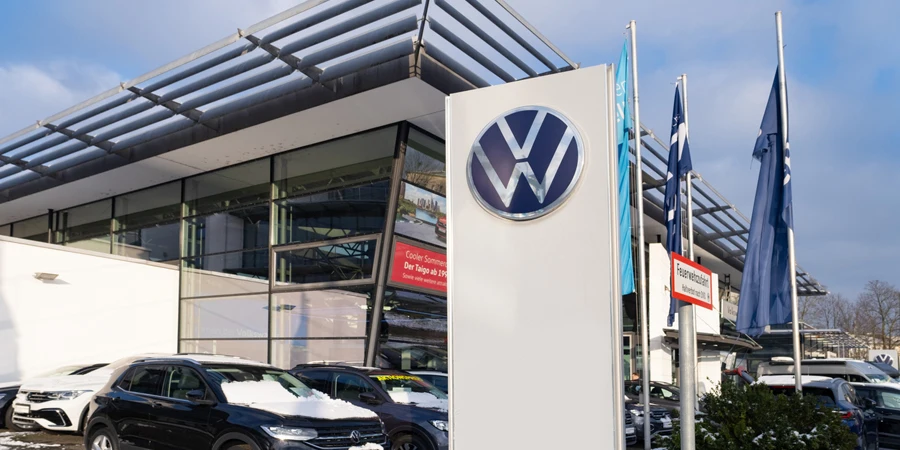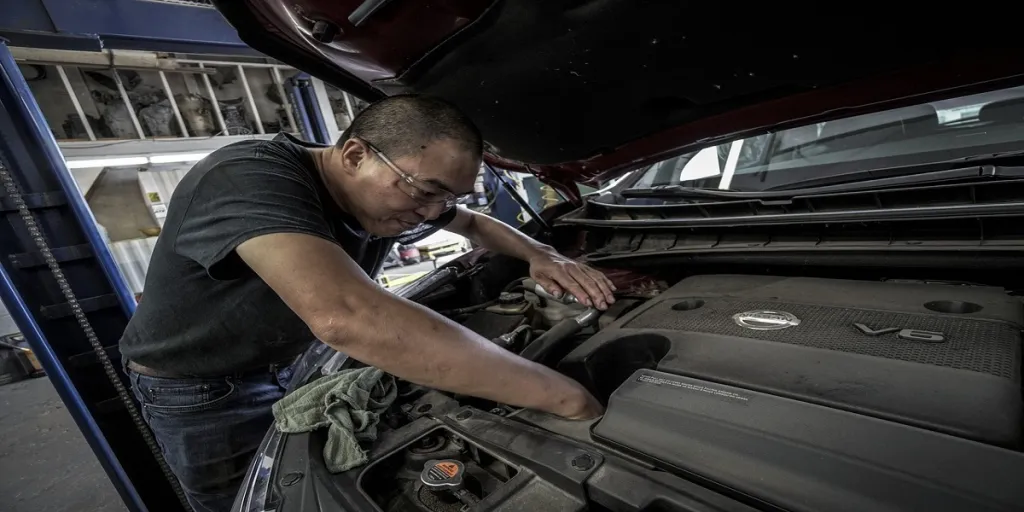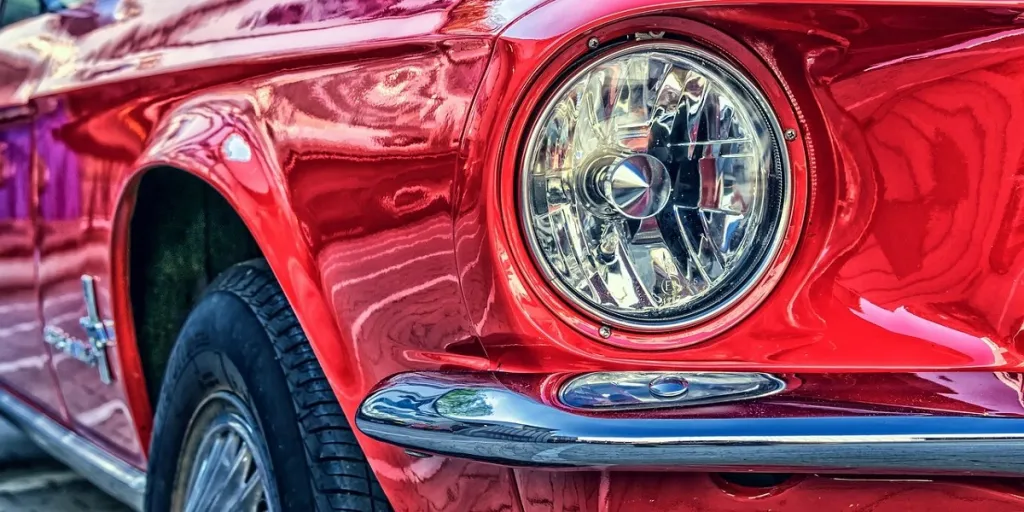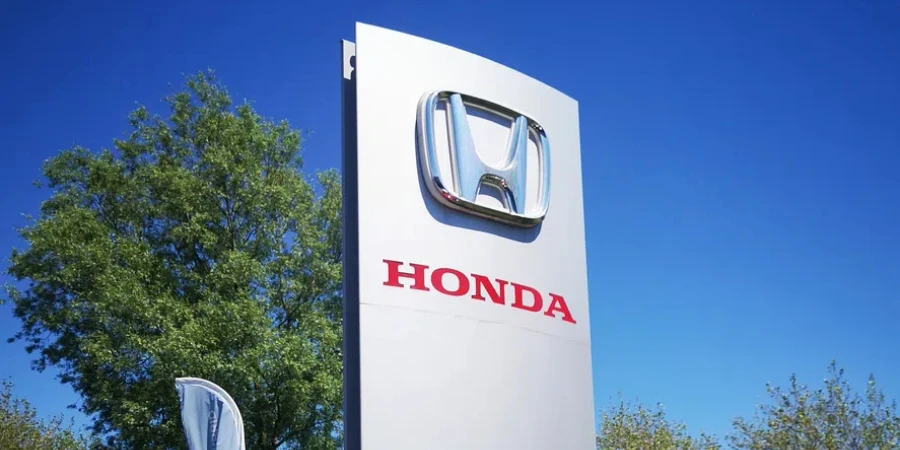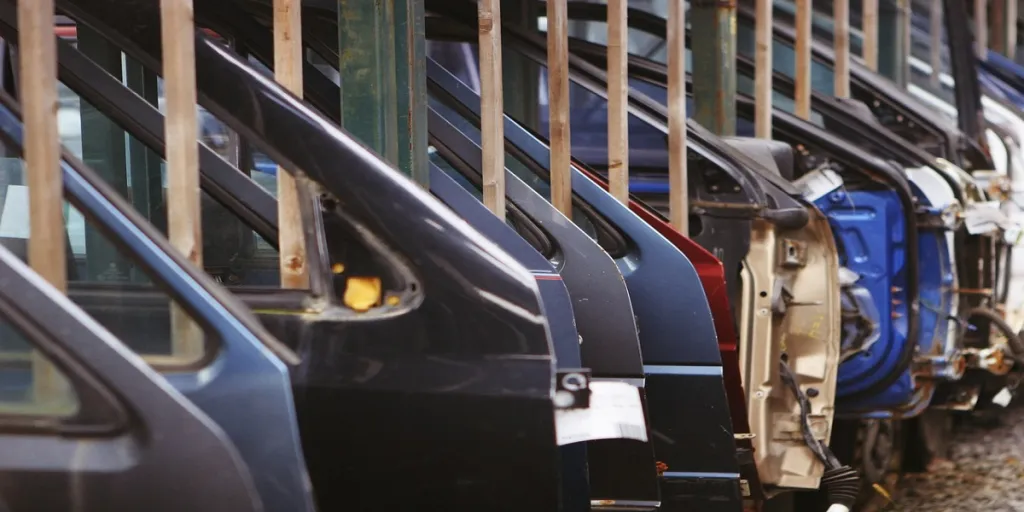The 2024 Volkswagen ID.4 will be available in three trim levels—entry, S and S Plus—with the option of 62 kWh or 82 kWh batteries, as well as rear-wheel- or all-wheel drive. The 2024 ID.4 electric compact SUV gets a major upgrade for its 82 kWh battery models. With a new performance drive unit, the rear-wheel-drive model now produces 282 horsepower, while the all-wheel-drive model now makes max 335 horsepower. This increase in power helps to boost acceleration and delivers enhanced range.
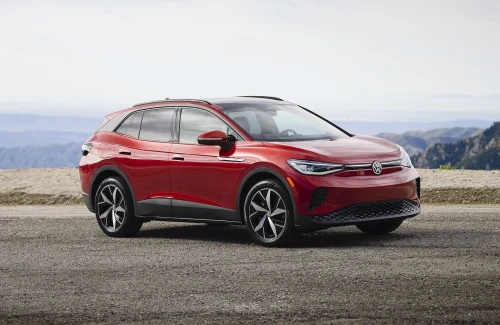
While 62 kWh ID.4 models continue with the standard 12-inch infotainment display, 82 kWh ID.4 models receive an enhanced 12.9-inch display with backlit sliders, as well a new and more intuitive climate control interface and a revised infotainment menu. Also, the car receives a new shifter position and a revised steering wheel layout.
Comfort and convenience is prioritized further in the 2024 ID.4. S models with the 82 kWh battery include ventilated front-row seats, and S Plus models receive a premium harman/kardonTM audio system with nine speakers, plus a subwoofer, and a 16-channel amplifier.
MSRP for the 2024 ID.4 starts at $39,735 for 62 kWh models and $44,875 for 82 kWh models, and destination is $1,425.
MY24 Volkswagen ID.4 models (when released with SK On components) that are placed in service in 2024 will be eligible for the full $7,500 Federal Tax Credit on a purchase by a qualifying purchaser, making the ID.4 not only more affordable, but competitive with conventional compact SUVs. MY24 ID.4 qualification is based on current battery supply, but because vehicle qualification in 2024 is dependent on batteries not yet produced, qualification is subject to change. Volkswagen is optimistic that MY24 ID.4 vehicles will qualify during the entirety of 2024, and will provide updates when received.
Based on fueleconomy.gov, to date, Volkswagen is the only foreign automaker that has a full battery electric vehicle that is eligible for the full Federal Tax credit, due to local assembly and sourcing. Starting in 2024, eligible customers may elect to apply the tax credit as a down payment on the purchase of an eligible EV at point of sale by transferring the credit to participating dealers.
Powertrain. With the MEB architecture, Volkswagen returned to its roots—the primary electric motor is located at the rear, like the original Beetle. The AC permanent-magnet synchronous motor is positioned above the rear axle, just in front of the centerline of the wheels, and transfers its torque to a single-speed gearbox. It is ideally placed for agile handling and traction, and nearly silent.
Volkswagen uses hairpin winding in the manufacture of the permanent magnet synchronous motor: the stator’s coils are made from square copper wires, which after bending, are visually similar to hairpins. This hairpin winding technique enables the wires to be packed more tightly. As result, there is more copper in the stator; power and torque are increased, while cooling is more efficient.
The electric drivetrain and other essential components of the ID.4 are produced by the Volkswagen Group Components sites in Kassel and Salzgitter, Germany, while the battery pack is assembled in Chattanooga using cells sourced from SK Innovation in Commerce, Georgia.
On 62 kWh-battery models, the base motor puts out 201 horsepower and 229 pound-feet of torque. New for 2024 is a performance drive unit for 82 kWh-battery models, which puts out 282 horsepower and 402 lb-ft of torque. The new, efficient drive system, is known within Volkswagen as APP 550.
The new motor is the central module of this efficient drive unit. It is the most powerful and highest-torque electric drive motor in a Volkswagen EV model so far. It forms a module that is integrated into the rear axle together with the dual-stage one-speed gearbox and pulse inverter.
The essential elements of the drivetrain are the three-phase permanent magnet synchronous motor, the two-stage one-speed gearbox, and the inverter (power and control electronics). The increased power and efficiency of the electric motor in the ID.4 are the result of details such as:
- a rotor with strong permanent magnets that offer a high thermal load capacity;
- an improved stator with a large effective number of windings in combination with maximum wire cross-section;
- a water heat sink for the outside of the stator; and
- a new, combined oil and water cooling system that also ensures higher thermal stability.
The thermal stability is safeguarded by a new inverter generation, and the higher thermal load capacity is an elementary contributing factor to the increased efficiency of the new powertrain. Numerous gearbox components have also been friction-optimized and reinforced, and thus adapted to the high power and torque values.
Volkswagen developed the new inverter, including its software, entirely in-house. The module is multi-faceted: for example, it converts the direct current (DC) stored in the battery into the three-phase alternating current (AC) needed by the electric motor. It also controls the complete energy flow between the battery and motor. Any acceleration or recuperation is processed by this electronic brain.
During recuperation, the inverter converts the generated alternating current into direct current that is then stored in the battery. It additionally monitors the temperature of the electric motor.
All-wheel-drive models add an asynchronous electric motor on the front axle for a total system output of max 335 hp. Each motor connects to the wheels through a differential and a single-speed gearbox.
The variable all-wheel-drive system offers several benefits over traditional mechanical setups. The rear motor handles standard driving situations, leaving the front motor to engage only as needed, such as when the ID.4 senses wheelspin at any corner. The motors can react within a few hundredths of a second so that the driver never notices the changes.
The EPA-estimated range on a full charge is 206 miles for the ID.4 Standard and the ID.4 S, with an EPA-estimated fuel economy rating of 115 MPGe in city driving; 98 MPGe on the highway; and 107 MPGe in combined city/highway driving. The EPA-estimated range for the ID.4 Pro and Pro S is 291 miles, with an EPA-estimated fuel economy rating of 122 MPGe in city driving; 104 MPGe in highway driving, and 113 MPGe in combined city/highway driving.
The ID.4 AWD Pro and AWD Pro S have an EPA-estimated range of 263 miles, and an EPA-estimated fuel economy rating of 108 MPGe in city driving; 96 MPGe in highway driving, and 102 MPGe in combined city/highway driving.
The ID.4 Standard and ID.4 S offer a 62kWh (gross) battery pack that lowers the price of entry as well. The ID.4 Pro is equipped with an 82kWh (gross) battery pack. Either battery is positioned in the underbody to create a low center of gravity for optimal driving dynamics as well as extremely well-balanced weight distribution.
The 82 kWh battery weighs 1,105 pounds; around a fifth of the larger battery’s weight is accounted for by the housing. This is a scalable aluminum construction whose interior framework is made from extruded and pressure-cast profiles. The housing is bolted to the frame, helping to improve bodyshell rigidity. A strong all-round frame made of extruded aluminum sections protects the battery system against damage in the event of an accident, and the battery is also disabled if the vehicle is involved in a serious accident. A replaceable aluminum underbody panel protects the battery against damage from the road.
The temperature of the battery modules is controlled using a floor plate with built-in water channels. The thermal management system keeps the battery in the ideal temperature range of around 77 degrees Fahrenheit at all times, benefiting power output, fast DC charging, and the battery service life. The High-Voltage System Limited Warranty provides that the battery will still have at least 70 percent of its original capacity after eight years of operation or 100,000 miles, whichever occurs first.
The ID.4 can be charged with both alternating current (AC) and direct current (DC) fast-charging. All ID.4 models are equipped with a CCS (Combined Charging System) socket, which allows for both home and public charging. At a home or public Level 2 charger, the 11 kW onboard charger allows the ID.4 to charge to full in approximately six hours and fifteen minutes for the ID.4s equipped with the 62 kWh battery and eight hours for ID.4s equipped with the 82 kWh battery.
The ID.4 Standard and S offer a 140-kW DC fast-charging rate, while Pro models equipped with the larger 82 kWh battery offer a 175-kW DC fast-charging speed. This allows all ID.4 trims to DC fast charge from 10-80% SOC in around 30 minutes.
Chassis. The ID.4 is designed to be fun to drive: with the large high-voltage battery located between the axles, lowering the center of gravity, the weight distribution is very close to 50:50. In the body, sophisticated solutions help to reduce the weight. The side sills, for example, are made from aluminum and ultra-high-strength steel, which is also good for crash performance.
With 3.5 turns lock-to-lock and a curb-to-curb turning radius of 31.5 feet for the ID.4 Standard, S, Pro, and Pro S models, the ID.4 feels nimble, especially compared with other compact SUVs. Even the all-wheel-drive models have a tight turning radius of just 36.4 feet.
The ID.4 has a strut-type front suspension, with lower control arms, coil springs, telescopic dampers and an anti-roll bar. The steering rack is located in front of the centerline of the wheels, to maximize stability during cornering. At the rear, the car has a compact multi-link suspension that features coil springs, telescopic dampers and an anti-roll bar. The ID.4 AWD models have a ride height that is raised by 0.7 inches compared with the rear-drive models and have firmer springs and dampers and thicker anti-roll bars. While the chassis and body are made from steel, parts of the suspension are made of aluminum to reduce weight.
Drivers can decide for themselves how comfortable or sporty they want the ID.4 to be with the Driving Mode Selection. This influences the steering weight, throttle response, and electric drive motors. Four modes are standard: Eco, Comfort, Sport, and Custom. Eco mode is designed for more efficient driving and tempers throttle response. Comfort mode ensures high driving comfort. Sport mode adds more responsive steering and throttle response; on all-wheel-drive models, it leaves the front motor engaged for maximum power. Custom allows a driver to blend between Comfort and Sport. All-wheel-drive models also offer Traction mode, which is intended specifically for driving on loose or slippery surfaces and features permanent all-wheel drive up to speeds of around 12 mph.
The vehicle dynamics control system, which debuted on the Mk 8 Golf GTI, is standard on ID.4 models and balances performance and battery efficiency. This system, which works closely with the ESC stability control system, controls the wheel-selective brake interventions of the XDS electronic transverse differential lock. It uses a digital target model to achieve optimum driving and steering behavior.
The ESC in turn cooperates closely with the control units for the electric motor and the power electronics. In rear-wheel-drive models, this networking is designed to ensure that the rear wheels of the ID.4 find grip in different situations—during acceleration, when cornering, and when the brake regeneration takes place. This type of traction control is speed-based and is another innovation from Volkswagen. It takes place automatically every millisecond, and is so fast and non-intrusive that the driver hardly feels any intervention.
In all-wheel-drive models, the vehicle dynamics system controls when the front-axle motor should engage. It also handles the XDS+ brake-based differential to optimize handling when cornering at speed: it gently brakes the wheels on the inside of the bend, thus turning the car slightly into the radius as required.
The regenerative braking system in the ID.4 is designed for efficiency and offers the driver two modes. The D (Drive) position is the default mode, automatically activated upon start-up. In this position, the car can coast whenever the driver’s foot is off the accelerator or brake pedal. As soon as the driver applies the brakes, energy recuperation is activated, and the electric drive motor feeds power back into the battery.
The B (Brake) position enables the driver to select a heavier amount of regeneration. Drivers can use the gear selector rocker switch to change from the D position to B at any time. In this mode, the ID.4’s drive almost always recovers energy during lifting off, but not all the way to a standstill. The limit has been set at 0.13 g—enough for clearly noticeable deceleration that won’t confuse drivers of conventional internal combustion engine vehicles.
During the majority of everyday braking maneuvers—up to around 0.25 g of deceleration—the electric drive motor performs the braking alone, while the electric brake servo only activates the friction brakes in situations that demand more stopping power. The transition from generator-based to hydraulic braking goes almost unnoticed, thanks to highly accurate and swift brake and drive system control. These systems also make sure that the rear wheels, where brake energy recuperation takes place, always have a sufficient amount of grip.
Source from Green Car Congress
Disclaimer: The information set forth above is provided by greencarcongress.com independently of Alibaba.com. Alibaba.com makes no representation and warranties as to the quality and reliability of the seller and products.
